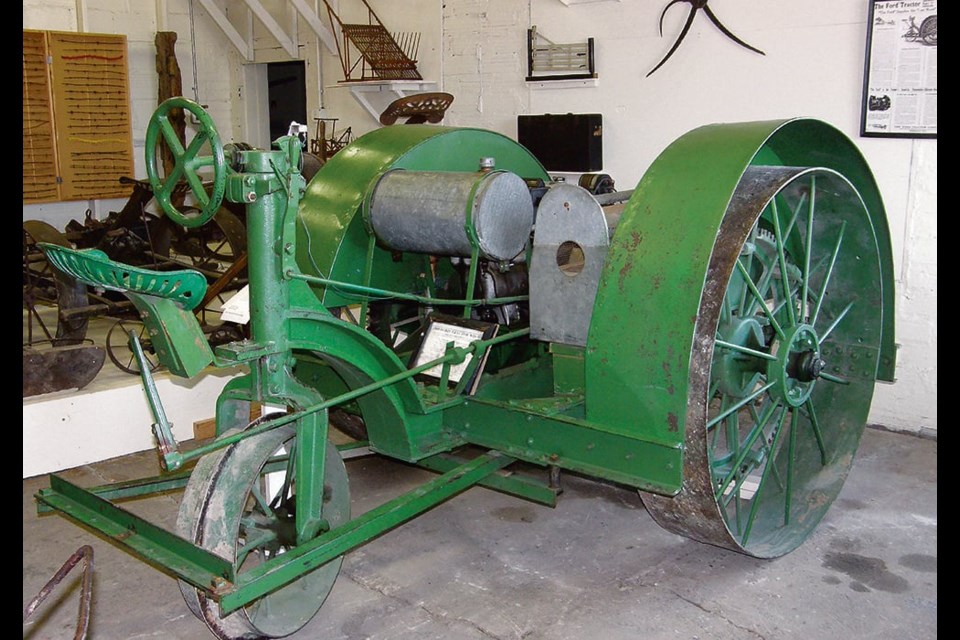WESTERN PRODUCER — I want to ask you a question.
How much has the type of agricultural equipment available to you, determined how you farm? How much did the type of machinery available to your father or grandfather influence the way they farmed?
Obviously, the kind of equipment available to farmers has changed a lot over the decades, and so have general farming practices. But did we change how we farmed and looked for machinery to accommodate those changes, or did the machinery available to us at the time change our methods?
Throughout the last century, a handful of inventors saw a way to do things better, and created machines that could improve farming practices. Then the rest of us changed what we did when those new and innovative machines became available.
In this series, we look at innovations in farm machinery and explore how they changed farming.
Exactly 100 years ago, this newspaper, The Western Producer, ran its very first issue. In the century since, it has arguably become Western Canada’s premiere agricultural newspaper.
But when it first hit newsstands in 1923, farming was undergoing a lot of changes. Steam traction engines, those heavy hulking behemoths, had helped break prairie sod and create a new major grain-growing region on the Prairies.
While steam traction engines were important in getting farming to that stage, they had limitations. They were big, heavy, complicated to run, and expensive.
By the early 1920s, the gasoline-engine tractor was everything steam power wasn’t. It was smaller, lighter, easy to operate and, most importantly, affordable.
But even as tractors were coming on strong, there was another power source still common on farms at that time. The horse.
In the early days of tractor development, it was estimated there were more than 200 different manufacturers, each with their own, often unique, designs. Some of them were a little strange looking, to say the least. Tricycles with single-wheel forward, other tricycles with a single wheel at the rear. Early four-wheel drives and the conventional two-wheel drive, as well as others.
But horses weren’t made obsolete overnight. Even now, horses, in a way, are still with us, at least in name.
Leading up to the development of the steam traction engine, or any steam-powered machine, James Watt was instrumental in improving their design.
When he was looking for a way to describe the amount of power his steam engine design could perform, he watched mine ponies working. And he observed they could raise 220 pounds of coal up 100 feet of mine shaft in one minute. That amounts to 22,000 foot-pounds of work per minute.
He added 50 percent to that amount for good measure, declaring 33,000 pounds of work per minute equals one horsepower. That helped describe the ability of his more-efficient steam-powered engine to mine owners.
And as it turned out, that unit of measurement was also pretty handy when it came to describing to farmers how much power a tractor could deliver, After all, most farmers still had horses, and they understood what a horse could do. But with all those 200-plus tractor builders out there, some of them got a little carried away with their horsepower ratings.
More than a few farmers who bought some of those early tractors felt—with a lot of justification — that they weren’t getting all the power they thought they paid for. Among those disgruntled tractor owners was Nebraska farmer Wilmot Crozier.
In 1916, he bought a strange-looking Ford tractor. But this tractor was built in Minneapolis by a company that had no relation to Henry Ford’s. The story goes that one of the employees working for the company that built this “Ford” tractor was named Ford. So the company used that as an opportunity to grab the name and ride on Henry’s famous the coattails.
Anyway, the “Ford” tractor was a dismal failure. It couldn’t do the work equal to the six or eight horses it claimed. After abandoning the Ford, Crozier bought a Rumley, which proved capable of performing much more than its manufacturer claimed.
To try and ensure farmers had a reliable measurement of a tractor’s abilities, a frustrated Crozier, who later became a member of the Nebraska state government, helped push through legislation that required every tractor sold in that state to be subjected to an independent test to confirm its manufacturer’s claims. The Nebraska Tractor Test Lab was created.
Since 1920, the Nebraska Tractor Test lab has been testing tractors and certifying manufacturers’ claims. Over the years, the staff there have caught a few cheats trying to pad their stats. But generally, brands have been complying and working on how best to design a tractor that can develop the most horsepower, creating usable pulling power and deliver it to wheels or tracks.
Caterpillar crawlers have been among the machines tested at Nebraska. In fact, any machine marketed to pull machines on a farm had to go through the test. Even Willys Jeeps were tested.
But back to that traction idea. Steel-tracked crawlers have been used as farm tractors over the years, but in recent decades, interest from farmers in steel-tracked machines was limited to speciality jobs, like the many sidehill vineyards in Italy or deep ripping fields in the San Joaquin Valley in California.
Despite their impressive traction, steel-tracked machines have drawbacks. They’re slow, heavy and can’t be driven on roads. And they were designed for pushing rather than pulling.
But in the 1970s, a couple of engineers at Caterpillar came up with a way to get most of the advantages of steel tracks, without any of the drawbacks.
In the next instalment we’ll take a look at how a new track technology was developed and became the traction method of choice for a lot of buyers of high-horsepower tractors.




